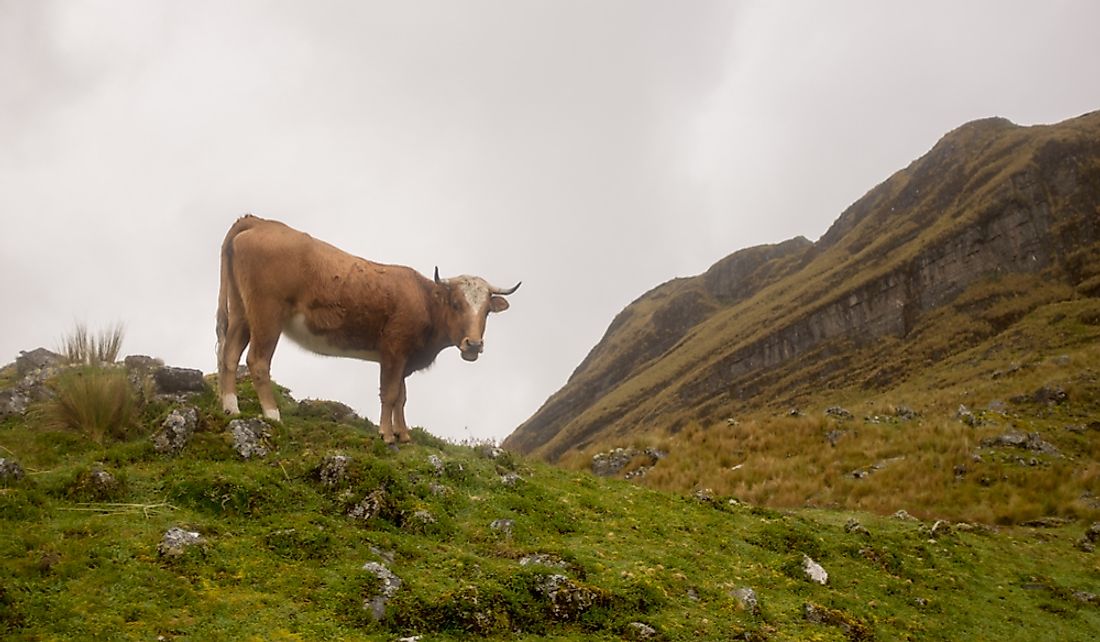What Are The Major Natural Resources Of Bolivia?

Bolivia is a South American nation that is located on the western edge of the continent where it spans an area of 424,164 square miles. Bolivia is considered one of the top 100 economies globally with the World Bank classifying it as a lower middle-income country. Historical data indicates that the Bolivian economy has been extremely reliant on its natural resources such as cocoa, silver, and tin. In 2017, the Bolivian gross domestic product was approximately $37.51 billion which was the 92nd highest in the world according to World Bank estimates. In the same year, the Bolivian per capita gross domestic product was approximately $3,394 which was the 118th highest globally at the time. There are several natural resources which have supported the modern day Bolivian economy such as oil, natural gas, the beautiful scenery, and the arable land.
Arable Land
One of Bolivia's most important natural resources is its arable land. In 2014, according to data from the Bolivian government, the country's arable land was roughly 4.13%. Bolivia had its highest amount of arable land in 2009 when it constituted about 4.15% of the country's total area. The Bolivian agricultural sector gained prominence in the 1980s due to the country's need to diversify its economy. In 1987, according to the Bolivian government, the agrarian sector contributed 23% to the nation's gross domestic product. The contribution was a significant decline from its output in 1960 which was roughly 30% of the gross domestic product at the time. During the 1980s, the Bolivian farming industry faced some challenges with the main ones being floods and droughts. In the present day, some of Bolivia's essential crops include coffee, soybeans, and sugar. Several of Bolivia's crops are sold to other nations such as Brazil and Peru.
Soybean
Since the 1980s, soybeans have been among one of Bolivia's most vital crops. Bolivian farmers invested heavily in the soybean during the 1970s after the global demand for soybeans increased dramatically. To take advantage of the high soybean demand, the Bolivian farmers increased the amount of land under soybean cultivation. During the late 1980s, soybeans were grown on more than 250 square miles of Bolivian land while in the 1970s they grew on 75 square miles. Most of the soybeans, close to two thirds according to some estimates, were sold to other nations particularly in Europe.
Livestock
The Bolivian livestock industry is one of the country's most well-developed sectors. Bolivian livestock farmers keep a wide range of livestock such as cattle, pigs, goats, and sheep. According to statistics from the Bolivian governments, in the late 1980s, there were close to 6 million beef cattle in the country. Most of the beef cattle were reared in the eastern section of the country particularly in the Beni and Santa Cruz regions. Cattle from Bolivia were sold to other nations such as Chile, Peru, and Brazil. Bolivia also has a dairy sector that is mainly centered in two of the country's departments, Santa Cruz and Cochabamba. The Bolivian daily sector does not supply enough dairy products to meet the needs of the Bolivian people.
Forests
According to the Bolivian government, close to 54% of Bolivia's total land area is covered with forests. Timber exports are some of the most critical exports from Bolivia particularly during the 1980s when the exports were valued at more than $30 million. The biggest challenge facing the Bolivian forestry sector is smuggling.
Minerals
Minerals have been vital to the Bolivian economy for a long time. Before the 1980s, the essential mineral in Bolivia was tin, but due to the falling prices of tin in the international markets, its value decreased significantly. Bolivia also had significant deposits of silver which were of great economic importance during the colonial era. For a while, Bolivia produced more silver than any other nation in the world. In 1988, Bolivia's silver production was roughly 225 tons. The San Cristóbal mining complex is the most critical mine in Bolivia.
Lithium
Presently, one of Bolivia's most essential minerals is lithium. Geological research indicates that the Bolivian lithium reserves are approximately 5.5 million tons. Data indicates that Bolivia has the largest concentration of lithium in the word. The lithium in Bolivia is mainly located in the deserts within the salt flats. Because the salt flats attract vast numbers of tourists, the government was unwilling to develop the deposits and ruin the salt flats. The Bolivian government has partnered with other nations, particularly those in Asia, to develop and exploit the lithium reserves.
Oil
In South America, Bolivia is one of the countries with oil reserves. Geological data indicated that Bolivia's total oil reserves are approximately 2,475,558,137 cubic feet and they are primarily located in the eastern and southern edges of Bolivia. For a significant portion of Bolivia's history, the government controlled much of the oil industry. To make the Bolivian oil sector more profitable the government made efforts to privatize it in the 1990s. The government also ensured that the oil reserves moved from government control to private control. However, oil production in the country has been falling.
Natural Gas
According to geological surveys, Bolivia had more than 187 cubic miles of natural gas. Bolivia's natural gas reserves are some of the largest on the South American continent. Bolivia's gas industry grew significantly during the 1990s after the government privatized the sector.
Challenges Facing the Bolivian Economy
The Bolivian economy faces some challenges with the most significant ones being the volatility in the global prices of oil and natural gas. Bolivia is also significantly impacted by natural disasters that mainly affect its agriculture sector.











